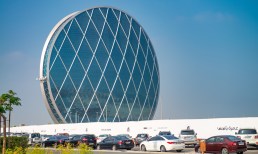“Back to the Future Part II” — released in 1989 but set during its first act in the (then-future) year 2015 — was a prophetic film.
Not with respect to the hoverboards; we still don’t have those yet. Nor the self-drying clothes or, of course, the flying cars featured in practically every future-set movie ever made.
The likes of the fictional Cafe 80s, however — the restaurant where Marty McFly finds himself greeted not by human servers but by television screens depicting digital representations of Michael Jackson, Ronald Reagan and Ayatollah Khomeini jockeying to take his order — have morphed into a reality (sort of).
Here in the actual 2015, the very real city of San Francisco, California, recently became home to a “fully automated” fast-casual restaurant called eatsa, where patrons order their food using on-site iPads and receive their meals through small glass compartments that SFGate calls “reminiscent of the classic mid-20th century automats.” No fuss, no muss … no human servers in sight (although there remain human workers in the kitchen to actually prepare the meals).
Scott Drummond, co-founder of the health food establishment (it is in San Francisco after all, and many of the product offerings are quinoa-based), describes the eatsa experience as “essentially lunch on demand. Eatsa’s Order Anywhere concept translates to zero wait time for customers. No more waiting in line. No more $12 lunch salads. Just delicious food that is nutritious, affordable and quick.”
Eatsa is not the sole representation of what some consumers are calling “robot restaurants.” Japan has been seeing highly automated eateries evolve from a conveyor belt system since 2010; more recently, in the U.S., McDonald’s announced plans to install self-ordering kiosks, while Chili’s and Applebee’s are underway with tablet-based ordering. Just last weekend, Johnny Rockets unveiled Johnny’s Burger Factory in Buffalo, New York; targeted at millennial consumers, the concept restaurant incorporates a video wall, digital menu board (that resembles a handwritten chalkboard) and a touch-screen ordering kiosk.
Advertisement: Scroll to Continue
It would appear that the robot restaurant revolution is upon us, providing consumers with food of all kinds through the fast service of shiny new technologies and at a low cost.
In the United States, it’s in relation to that last issue — cost — where some analysts are finding a less-than-pristine undercurrent in food service establishments’ desire to get on board the automation train.
With the minimum wage continuing to rise in states throughout the country and members of Congress having recently introduced a bill to increase the federal minimum wage to $15 an hour, businesses across the board are concerned with how that will affect their bottom lines. Perhaps nowhere is that conflict more pressing than in the restaurant industry, approximately 30 percent of whose cost goes toward the minimum wage salaries of millions of servers, kitchen staff members and cashiers nationwide.
“Faced with a $15 wage mandate, restaurants have to reduce the cost of service,” stated a full-page ad in The Wall Street Journal last year from the Employment Policies Institute (which, as CNN notes, supports corporate interests). ”That means fewer entry-level jobs and more automated alternatives — even in the kitchen.”
It’s installing automated service methods, then, that more and more restaurants are turning to as a potential salve for this threat to their profit margins, perhaps keeping one faction of humans happy — their customers — while definitely doing just the opposite for another — the employees, who stand to lose their livelihood, effectively, to robots.
“The miracle is, the wage increase is driving the interest [in automation],” Dave Brewer, chief operating officer with kitchen equipment company Middleby Corp., told The Washington Post. “But the innovation and the automation, they’re going after it even before the wages go up. Why wait?”
There are actually a couple of reasons that a restaurant owner might want to wait. For one thing, automated systems — while they may reduce operating costs in the long run — are expensive to implement. There’s also a more nuanced factor in play, which The Washington Post story addresses: The core concept behind hospitality is human interaction … and that’s something that some consumers specifically go to restaurants to seek out.
“I think that tablets have a place at the table, but it’s pretty hard to ask questions, get suggestions from a tablet. I don’t think they replace a server; they make a server more efficient,” Andy Wiederhorn, chief executive of Fatburger, told the outlet. “We’re selling hamburgers, shakes and fries, and [customers] want to talk to somebody and say, ‘Here’s how I want it.’ So, I think in the hospitality industry to assume that technology will take the place of workers is a false assumption.”
Although advances in technology make it entirely likely that automated restaurants like eatsa will continue to pop up (throughout the U.S. and the rest of the world), it remains to be seen, for now, which side of the automated service vs. human-based service debate will emerge victorious in the restaurant space.
By the time that the issue is settled, we might finally have those hoverboards.



